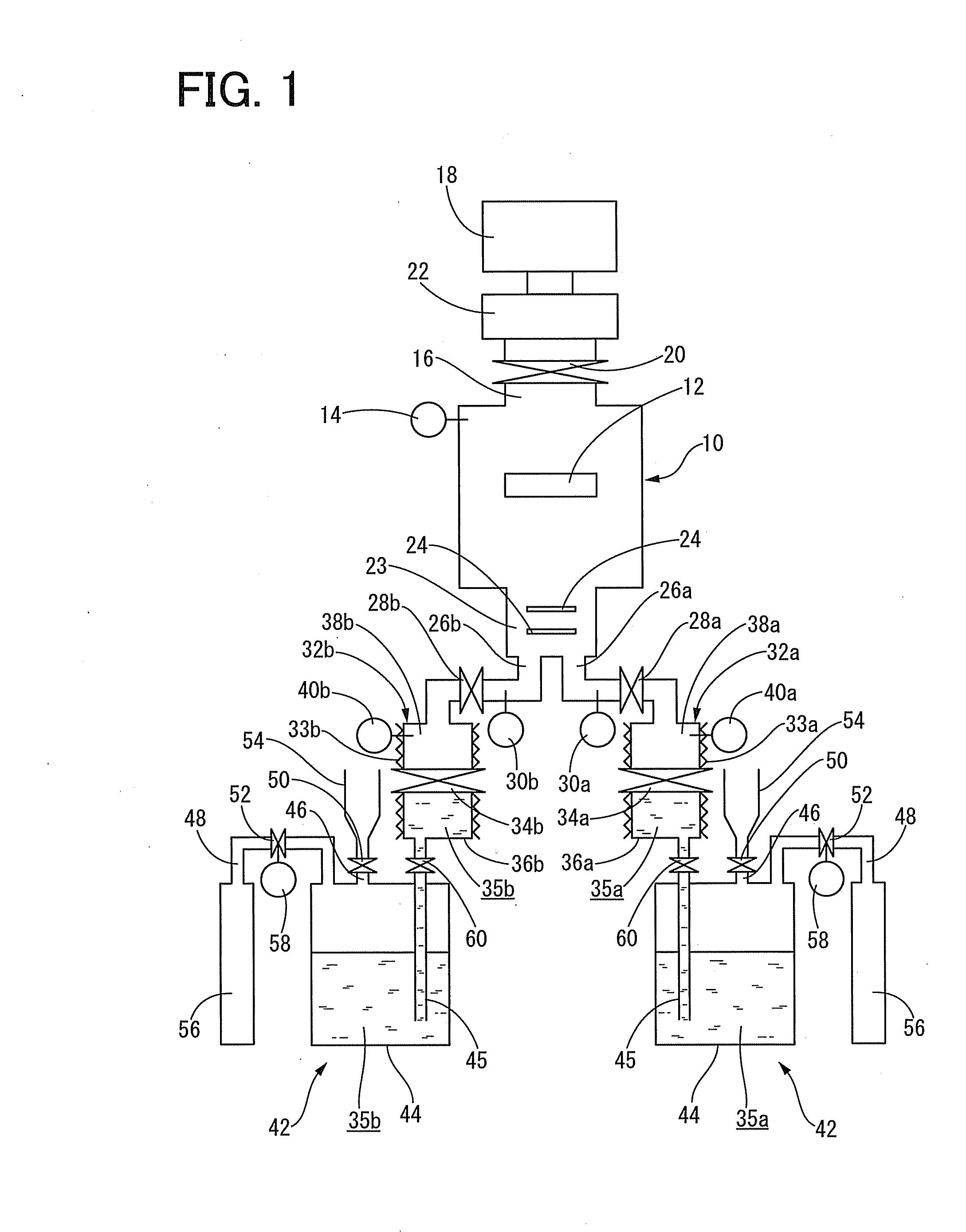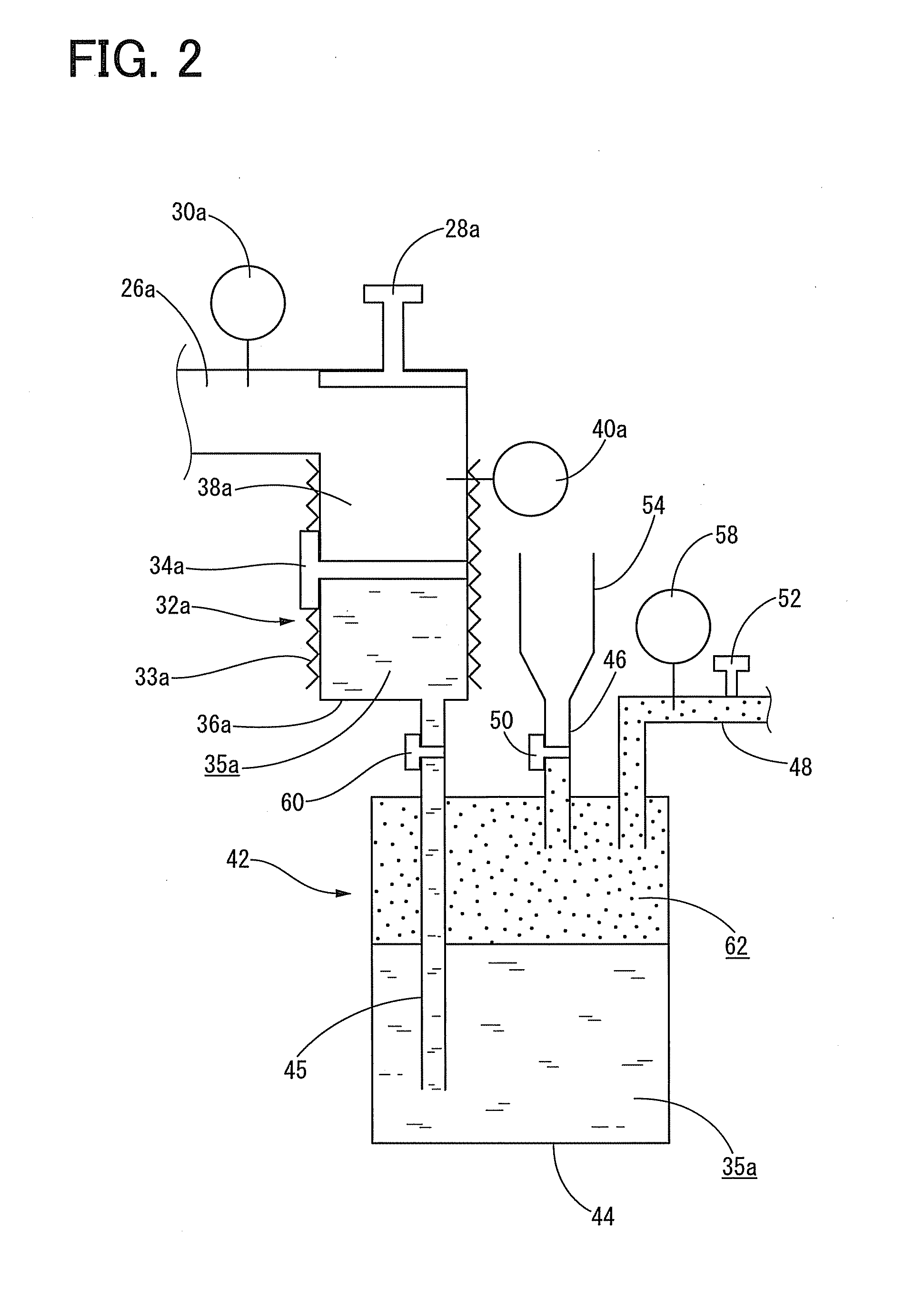Method of forming organic polymer thin film and an apparatus for forming the organic polymer thin film
- Summary
- Abstract
- Description
- Claims
- Application Information
AI Technical Summary
Benefits of technology
Problems solved by technology
Method used
Image
Examples
example 1
[0132]Initially, as monomers, two kinds of monomers, i.e., 1,3-bis(isocyanatemethyl)cyclohexane and methylenebis(4-cyclohexylamine), in a liquid form were each provided in a predetermined amount. Further, as an apparatus for forming an organic polymer thin film, an apparatus having a structure shown in FIG. 1 was provided. Specifically, the apparatus for forming an organic polymer thin film used herein includes a deposition chamber having a volume of 0.10 m3, a mixing chamber having a volume of 0.01 m3, and a first and second evaporation source containers, respectively, including a first and second vapor-storage chambers having a volume of 150 ml and first and second liquid-storage chambers having a volume of 100 ml.
[0133]Then, 100 ml of 1,3-bis(isocyanatemethyl)cyclohexane, which is the same volume as that of the first liquid-storage chamber, was contained in the first liquid-storage chamber, and 100 ml of methylenebis(4-cyclohexylamine), which is the same volume as that of the sec...
PUM
| Property | Measurement | Unit |
|---|---|---|
| Pressure | aaaaa | aaaaa |
| Stability | aaaaa | aaaaa |
Abstract
Description
Claims
Application Information
 Login to View More
Login to View More - R&D
- Intellectual Property
- Life Sciences
- Materials
- Tech Scout
- Unparalleled Data Quality
- Higher Quality Content
- 60% Fewer Hallucinations
Browse by: Latest US Patents, China's latest patents, Technical Efficacy Thesaurus, Application Domain, Technology Topic, Popular Technical Reports.
© 2025 PatSnap. All rights reserved.Legal|Privacy policy|Modern Slavery Act Transparency Statement|Sitemap|About US| Contact US: help@patsnap.com



